& Dream Catchers Academy

VOL 3 NO. 23 • JUNE 04, 2023
Growing up with basic amenities can easily be taken for granted, but only some are blessed to have the basics available to them. For some people, a roof over their head, food, and clothing is a luxury. This is the situation the kids at Dream Catchers Academy, run by Seyi Oluyole, found themselves in before they were taken off the streets and into a home. There they are homeschooled and provided with sustainable skills in art and entertainment to empower them to be financially independent in the future. Read their story on pages 8 through 10.

This week’s entertainment page features a book, a music album and a movie you must see in Listen. Read. Watch. Expect to see more of this.


Pairing your makeup with your outfit is more challenging than it may seem. It takes skill and knowledge to accomplish this, but not to worry; we have you covered with a simple guide that will put you through quickly. See pages 12 and 13.
Our food page, Bon Appetit, has some alternatives for those who are lactose intolerant, so check out page 14.
The movie review page criticises The Little Mermaid, and from what I have read so far, I’m not as eager to watch it based on this review as I was after watching the preview. If you see it, let us know what you think. Don’t forget to scan the QR codes.
Until next week, enjoy your read.
AUSTYN OGANNAH PUBLISHER/EDITOR-IN-CHIEF
Editor: Onah Nwachukwu @onahluciaa

Editor-at-Large: Chalya Shagaya

Senior Writer: Kehindé Fagbule


Graphic Design: Oludemilade Aremu


Digital Media: Oladimeji Balogun
Guest Art Director: Sunny Hughes ‘ SunZA’

Dorcas Akintoye


Dorcas Akintoye is a dedicated writer with more than 2 years prolific experience in writing articles ranging from food, entertainment, fashion and beauty. She has a National Diploma in Mass Communication from Kwara State Polytechnic, Ilorin. She loves writing, listening to music and playing scrabble. She is a highly-skilled, enthusiastic, selfmotivated professional writer.
- Contributing Writer



Onwumere Churchill Ikenna is a writer, poet, digital and social media content strategist. An Afro gen z clan member of kenga media. He is a movie critic who was amongst those who birthed the first movie brand; Feeem house brand. A full fledged member of the writers space Africa, Nigeria district and was part of the editing team of the second anthology issue by the writers space Nigeria.
He has written so many articles, stories and e books. An avid reader and a freelancer. You can check out his literary editing page @coidencreatives on Instagram and twitter.
His personal socials for both Instagram and twitter are : @ikennachurchill



VOL 3 NO. 23 • JUNE 04, 2023 PAGE 2 THEWILL DOWNTOWN • www.thewilldowntown.com www.thewilldowntown.com thewilldowntown thewilldowntown @onahluciaa + 2349088352246 Onah Odun Ogunbiyi @oddbodandthecity - Contributing Editor Odunayo Ogunbiyi is an ex pharmacist with a passion for food and pampering. Writing about her exploits wherever in the world she may find herself is just her way of staying sane in this zany world. Boluwatife Adesina @bolugramm - Contributing Writer Boluwatife Adesina is a media writer and the helmer of the Downtown Review page. He’s probably in a cinema near you. Photo: Kola Oshalusi @insignamedia Makeup: Zaron CONTENTS The Little Mermaid 06 8-10 16 15 14 12-13 11 REVIEW CULTURE BON APPÉTIT BEAUTY ENTERTAINMENT SPECIAL FEATURE COVER Queen Charlotte Appeals To The African Women In Me Seyi Oluyole & Dream Catchers Academy The role of culture in people from mixed origins Lactose Intolerance Exploring Dairy-Free Options for Better Digestion How to Match Your Makeup to Your Outfit Like A Pro Listen Read Watch EDITOR’S NOTE 07 04-05 FASHION How to Incorporate High Fashion Trends Into Your Everyday Style DOWNTOWN CONFIDENTIAL Balancing Independence And Togetherness in Your Relationship
WHAT YOU SAID @foluflorish @michaelking INSTAGRAM
Believe my government New Dawn wey start with rain God Abeg oh @disismentRR
Onwumere Churchill Ikenna



PAGE 3 THEWILL DOWNTOWN • www.thewilldowntown.com VOL 3 NO. 23 • JUNE 04, 2023
How to Incorporate High Fashion Trends


INTO YOUR EVERYDAY STYLE
BY DORCAS AKINTOYE
Over the years, the fashion industry has constantly changed and evolved, with new and unique trends emerging every season. High fashion looks might seem out of reach for the average person, but luckily there are so many ways you can incorporate these runway styles into your everyday wardrobe. All you have to do is to find a balance between staying on-trend and staying true to your style.
Despite how easy this may sound, incorporating high fashion into your everyday style can take a lot of work. One of the challenges is finding the pieces that are wearable and practical for your lifestyle. Before you get swept up in the latest trends, you must confirm if that style will work well with your body type, personal style, and daily routine. That said, it is easy for anyone to take inspiration from the catwalk and make it work for their wardrobe; all you need is a little creativity and know-how. The ultimate key to incorporating high fashion into your everyday style is staying true to yourself and your style. While it is important to stay on-trend, it is also essential to feel comfortable and confident in what you’re wearing. You can create a stylish and practical wardrobe for your everyday life by finding pieces that flatter your body and make you feel good. Feel free to take inspiration from the catwalk and make it work for your style.
Below are some tips on how to make it work.
FASHIO N
VOL 3 NO. 23 • JUNE 04 , 2023 PAGE 4 THEWILL DOWNTOWN • www.thewilldowntown.com
(1) BE SELECTIVE
As stated earlier, not every latest trend will work for everyone. This is why you must choose trends you genuinely like and, most importantly, go for ones that suit your style. Doing this will help you to avoid buying outfits that will end up in the back of your closet after one wear.

(2) INVEST IN STATEMENT PIECES
One of the great ways to incorporate high fashion trends into your everyday style is by investing in statement pieces. Statement pieces are eyecatching, and they can make any outfit stand out. Consider investing in a statement coat, bag, jewellery, or even a pair of shoes that will make a statement and elevate any outfit you want to rock.

(3) PLAY WITH COLOUR
High fashion trends often include a specific colour palette for the season. You don’t need to replace your entire wardrobe to incorporate these colours. Instead, you can incorporate these colours through accessories like scarves, jewellery, or even bold lipstick.

(4) MIX AND MATCH
Do not be scared to mix and match different styles and textures. Pair a feminine dress with chunky boots or layer a jacket over a flowy skirt. In case you don’t know, mixing and matching can add interest and depth to any outfit.

(5) TAILOR TO YOUR BODY TYPE
Every fashion trend is often designed with a particular body type in mind. However, not everyone fits into that mould. So don’t ever force yourself into a trend that doesn’t suit your body type. Look for pieces tailored to your body shape that make you confident and comfortable.
(6) MAKE IT YOUR OWN
Fashion is all about expressing yourself. If you love a trend but need clarification about how to incorporate it into your wardrobe, keep going until you find a way to make it your own. You always layer a trend with a classic piece or, better still, add your twist to the trend.


PAGE 5 THEWILL DOWNTOWN • www.thewilldowntown.com VOL 3 NO. 23 • JUNE 04, 2023 the
FASHION
QUEEN CHARLOTTE
Appeals To The African Women In Me
BY SATIRA OSEMUDIAMEN
Dearest Reader,
It is expedient I write to you about my perspective on the latest Bridgeton Story gifted to us by Netflix. Saddled with the burden of being a hopeless romantic and storyteller, my mind cannot stop thinking about Queen Charlotte. As a fan of romantic stories, I feel disappointed that some people perceive Queen Charlotte as shallow with beguiling taints of racism. I may not be familiar with the technical aspects of producing a quality picture, but I do appreciate a well-written plot, and Queen Charlotte is a limited series that does this really well.
disorder that might predispose someone to Porphyria. There are others who believe that he may have been bipolar.
The limited series portrayed the picturesque setting of what I have read about King George III. I also can’t help but think about the reason Queen Charlotte decided to remain in that marriage after learning of his situation. Love and vulnerability must be that powerful. As I lay face up on my bed, I questioned my ability to love unconditionally and whether I have the emotional capacity to be committed to a partner who might be mentally, financially, spiritually, and emotionally deficient due to circumstances beyond his control. Moreover, I wonder if many single people like me are prepared for the uncertainty of being married. The increasing rate of divorce increases my submission that many of us, including myself, have been too occupied filling our minds with the ‘I burn for you’ emotions of Simon and Daphne and have neglected the reality of the obstacles we may face in marriage. It may be argued that Queen Charlotte had no choice but to stay in the union since she owed it to Germany and the “great experiment” of interracial marriage to do so. Hence, she had to use the lemons she was given to create lemonades.

women who feel scared of admitting their sexual desires. Unfortunately, African society and religious institutions have not done a proper job of creating a balance in educating people about their humanity. As a Christian, I have discovered that it is easy for men who lose their wives to get married or be begged into remarrying after two years. While for women, several factors ranging from patriarchy to slut-shaming discourage such.
We cannot ignore the doggedness, and wit possessed by Lady Danbury. Those who feel triggered by the theme of racism must not easily forget the peculiarities of social interactions in the Western world before the official abolition of the slave trade. Is that not why the union between King George and Queen Charlotte was referred to as ‘the great experiment’? Why are we being myopic in our view of a story that reflects hard truths many of us are too scared to confront? Some African/Black women can identify with Lady Danbury’s battle to withstand terrible realities, like racism, marriage to a narcissist, or being disappointed by what appears to be a light at the end of the tunnel of love and desire.
In conclusion, I am in awe of how intelligently Shonda weaved fiction with historical facts. To those who have watched it hazily, I hope you rewatch Queen Charlotte with an open mind, read further, and learn the intricacies behind telling a good story.
Shonda
Rhimes, the limited series’ creator, creatively explores inversely unconventional and unconditional commitment, racism, desire, arranged marriage, societal expectations, responsibility, survival, love, politics, and betrayal. Haunted by these themes, my mind has wandered around the realities that troubled women and Black people before modernisation and feminism.
Queen Charlotte has historical ties to the British Monarch George III, the first monarch to study science systematically and who, sadly, suffered from mental illness.

History tells us that the British admired King George and Queen Charlotte’s marriage because of their faithfulness. George never took a mistress (in contrast to his grandfather and sons), and neither was it on record that Queen Charlotte had secret lovers. In fact, the couple was said to have enjoyed a happy marriage until the mental illness.
Numerous accounts and articles suggest he suffered from acute mania, a symptom of Porphyria. According to research, he had elevated blood arsenic levels, which is a metabolic blood
That might be the case, but it seems to me that she followed her guts and unusual (but strong) convictions. It makes sense that her kids also thought she was insane. While I admire her for her resilience, her actions have left me perplexed about the difference between trusting your convictions about your partner and being at ease in an abusive relationship and having faith in your partner. A relationship expert might be able to answer this appropriately, I suppose.
Furthermore, I love how the series is a full-length backstory of three women: Queen Charlotte, Lady Danbury, and Violet Bridgeton. We see women who defy societal expectations in their own way while dealing with the complexities of being dutiful wives and mothers.
The sincerity of Dowager Viscountess Bridgeton’s admission that her ‘garden needed blooming’ reflects the struggles of widowed

VOL 3 NO. 23 • JUNE 04, 2023 PAGE 6 THEWILL DOWNTOWN • www.thewilldowntown.com
SPECIAL FEATURE
BALANCING
Independence And Togetherness
IN YOUR RELATIONSHIP
BY DORCAS AKINTOYE
a peaceful relationship can be challenging, especially when balancing independence and togetherness. You need to be able to keep your identity while at the same time building a solid connection with your partner.






Maintaining
Independence is all about having the freedom to make choices, pursue your interests and maintain your identity. Independence is when you have a sense of autonomy and can function independently. On the other hand, togetherness is about sharing experiences, values, and interests with your partner. Togetherness is all about feeling emotionally connected with your partner. It involves building a strong bond that can withstand the ups and downs of life.
Balancing independence and togetherness in your relationship cannot be underestimated. Apart from the fact that maintaining your independence is necessary for your mental and emotional well-being, it also allows you to pursue your goals and interests and make your own decisions without relying on your partner. Togetherness plays a significant role in establishing a robust and thriving relationship. When a relationship lacks togetherness, both partners’ sense of intimacy and closeness would be faulty.
Above all, balancing independence and togetherness is important for maintaining a healthy and happy relationship. While you need to spend quality time with your partner, having a sense of individuality and personal space is also necessary.
Here are some tips to help you strike the right balance.
(1) COMMUNICATION
Apart from the fact that communication is key in any relationship, it is also a very important element to note when it comes to balancing independence and togetherness. Make sure to communicate your needs and expectations clearly to your partner. Discuss with your partner how much alone time each of you needs and what activities you want to do together.
(2) TRUST YOUR PARTNER
(4) RESPECT BOUNDARIES
It is important to respect each other’s boundaries; it doesn’t matter whether it’s physical or emotional. If your partner needs alone time, give them space and respect their decision.
(3) FIND COMMON INTERESTS
Trust is a critical component of any healthy relationship. Trusting each other can help you feel secure in your relationship, even when you spend time apart.
(5) COMPROMISE
Relationships are all about compromise. You and your partner must be willing to compromise and find solutions that work best for both of you. This involves letting go of some things to make your relationship work.
Finding common interests can go a long way in helping you bond with your partner at the same time, strengthen your relationship. Doing this doesn’t stop out from having your hobbies and interests. Encourage each other to pursue your passions and interests.
As we’ve said earlier, balancing independence and togetherness is important for a healthy and fulfilling relationship. It requires effective communication, trust, compromise, mutual support, etc. You can maintain your identity by achieving this balance while building a solid emotional connection with your partner. Do not give up if you’re struggling to find the right balance between independence and togetherness in your relationship! You can achieve it.
PAGE 7 THEWILL DOWNTOWN • www.thewilldowntown.com VOL 3 NO. 23 • JUNE 04, 2023
DOWNTOWN CONFIDENTIAL
SEYI OLUYOLE
&Dream Catchers Academy
Forevery one of us, successful or otherwise, there are experiences that not only shape us but also determine our place in this world. Our origin stories often have a bearing on how we end up. In life, we can pick and choose many things, but the cards we are dealt. Especially in this part of the world where more than half of the population live below the poverty line, the cards are cruel for most children, and the odds are stacked mightily against them. And although for some of us, the privileges we often take for granted, such as feeding, clothing, housing, protection and access to quality education, are a non-negotiable constant throughout our formative years, for others, they are an inaccessible luxury. Having lived through a not-sopleasant childhood herself, one that saw her unable to attain early education, homeless and vulnerable to sexual assault, Seyi Oluyole, on relocating back to Nigeria from the United States, started a non-profit, Dream Catchers Academy (DCA), that would provide educational opportunities and sustainable skills to street children, to empower them for financial independence. Nine years on, the academy has played its part in picking vulnerable children off the streets and changing the course of their lives, not just by providing them with basic amenities but also lifelong skills in arts and entertainment that even privileged kids can only aspire to.
DOWNTOWN’s Senior Writer, Kehindé Fagbule, had a conversation with Oluyole to discuss the evergrowing program and its funding, the kids and the academy’s plans for the future.

VOL 3 NO. 23 • JUNE 04, 2023 PAGE 8 THEWILL DOWNTOWN • www.thewilldowntown.com COVER
PICTURES FROM DREAM CHASERS ACADEMY
Your origin story is very inspiring. But unlike your initiative, most people who get out don’t intentionally go back to pull others out. You founded the academy in 2014, but at what point did you conceive the idea, and what were the first few steps you took to execution?
Iconceived
the idea at 11, standing by a well to fetch water while I watched other kids go to school. My mum was also being verbally abused by the person we were squatting with at the time for using her pot to cook Ila Asepo (Jollof Okro). As if this was not enough, I started bleeding (menstruation) that same afternoon. My mum was too exhausted to even guide me on what to do with this new development. I was very tired of the situation, but that’s all I could feel — tiredness.
I had no idea how to get myself out of the homelessness and out-of-school situation. It was at this point that I vowed to help as many girls as I could out of such helpless situations. I promised myself I’d work hard and help other children.

Having a rather difficult childhood, it was clear why you had to prevent less privileged girls from having similar experiences. How did you find the first girl(s)? What was recruitment like despite the limited funding and resources?
I found the first girl sitting by the roadside while other kids went to school. I could see the sadness in her eyes, and I could relate to the struggle, so I approached her. I found the next set of girls from word of mouth about their homeless situation. Recruitment was quite difficult—I was using my salary at the time, so I had to ensure I wasn’t biting more than I could chew.
Tell us about the structure. We know you house them and teach them valuable art skills, but you’re
not a formal school. Are you in partnership with a school? How invested are you in their school performances? We run a homeschooling and accelerated learning program. We have girls who have never been to school. A 10-year-old would ideally be in JSS 1(Junior Secondary School) or JSS 2, yet we have girls who are 10 who have never been to school and need to learn from scratch. We can’t put such a child in a conventional school as she needs to learn the basics, and not all kids would have the will to sit in Nursery 1 at 10 years old while her classmates are 4-year-olds. We partner with schools around us for important exams like Common Entrance, Junior WAEC and the like. We also partner with schools in terms of socialization and ensuring our girls are mixed up with other children. Hence, we teach our girls based on their education level. Education is the foundation of all, and Arts Education also helps learning. Arts education helps improve the imagination of children. Dancing, for instance, helps strengthen the brain by connecting its functions for physical movement, feeling and coordination. This coordination is needed in the classroom as a strengthened brain improves concentration, problem-solving skills, and so on. With music, learning music has been proven to reinforce language skills and improve reading and concentration, amongst others. The same goes for Visual Arts as well. How invested I am in their school performance is not even a question because they are with us to learn and for their lives to be transformed, and that can only be achieved when they are well-educated. I am invested in every aspect of their lives with an equal balance.
We live in a society that places the utmost priority on formal education while belittling vocational or artistic education. But DCA is maintaining a healthy balance. Just how important do you reckon vocational and artistic skills are in raising today’s children?
I reckon vocational and artistic skills are very important. Aside from the fact that these skills can help improve learning, it is important that children are prepared for the future. One of the ways is through active participation in skills development. It is important to us that our girls grow sustainably so they don’t end up in the poverty line.
In your opinion, what do you think will cause
that paradigm shift that will make parents pay as much attention to arts as they do formal education? The paradigm shift is already happening, even though I worry it is sometimes for the wrong reasons—parents and guardians only want fame for their children without proper values or plans for the future. I, however, believe the paradigm shift will happen successfully with partnerships with relevant government bodies and organizations, awareness and productivity.
Your girls can dance! It’s a great way to put children’s minds to good use. Run us through what the average day looks like at the academy. They wake up, say their prayers, do their morning duties, have breakfast and start educational classes. They get a snack and a break. Head back to formal education classes. Have their lunch and another break after. We have art classes, and they take their naps. In the evening, they do their laundry and formal education assignments, then eat dinner and go to bed. Weekends are a little less structured as we get to rehearse, watch movies and play games as a family. They dance, make music, farm, and so on. You arm them with real-life skills to not just survive but also thrive out in the world. Have you ever had girls in the academy grow to become women? What is the long-term plan for girls that come of age?
We have girls who are currently in the university. We have girls who have been with us for seven years and are now in senior secondary school, and we are looking forward to their progress. Our 15-year-olds record some of the videos we post and are already getting ready for the future. Our program is a family, and we hope that even as our girls grow into women, we can remain a family. Our long-term goal is to find scholarships for our girls going into university and for them to use the skills they’ve learnt to stay sustainable. Some non-profits struggle to get funding because other NGOs have made it difficult for donors to be fully trusting with their donations. How did (or do) you navigate this dilemma?
We still face this dilemma. However, we try our best to be transparent with our donors. Our progress is also communicated through leveraging social media. You can see growth in our girls from how they look healthier and the joy they exude. We experience these same issues; hence we have an open door policy to our donors, all while ensuring that our beneficiaries are adequately protected and safe.
What are some of your biggest dreams for the academy? Where do you see DCA years in the future?
Travelling and touring the world with our talents while inspiring and making the world happy. Sharing the stage with amazing artists.
Graduating amazing girls who would go ahead and be world leaders and pay it forward. Recreating the DCA program in different regions of the world and providing these amazing opportunities to many more girls out there. And being able to have pictures of our alumni posted in our programs to show that if you dream it, you can achieve it.
PAGE 9 THEWILL DOWNTOWN • www.thewilldowntown.com VOL 3 NO. 23 • JUNE 04, 2023 COVER
“I was very tired of the situation but that’s all I could feel — tiredness. I had no idea how to get myself out of the homelessness and out-of-school situation. It was at this point that I vowed to help as many girls as I could out of such helpless situations. I promised myself I’d work hard and help other children.”
“Our progress is also communicated through leveraging social media. You can see growth in our girls from how they look healthier and the joy they exude. We experience these same issues, hence we have an open door policy to our donors, all while ensuring that our beneficiaries are adequately protected and safe.”
“Our program is a family and we hope that even as our girls grow into women, we can remain a family. Our long-term goal is to find scholarships for our girls going into the university and for them to use the skills they’ve learnt to stay sustainable.”
COVER
“I reckon vocational and artistic skills are very important. Aside from the fact that these skills can help improve learning, it is important that children are prepared for the future. One of the ways is through active participation in skills development. It is important to us that our girls grow sustainably so they don’t end up in the poverty line.”
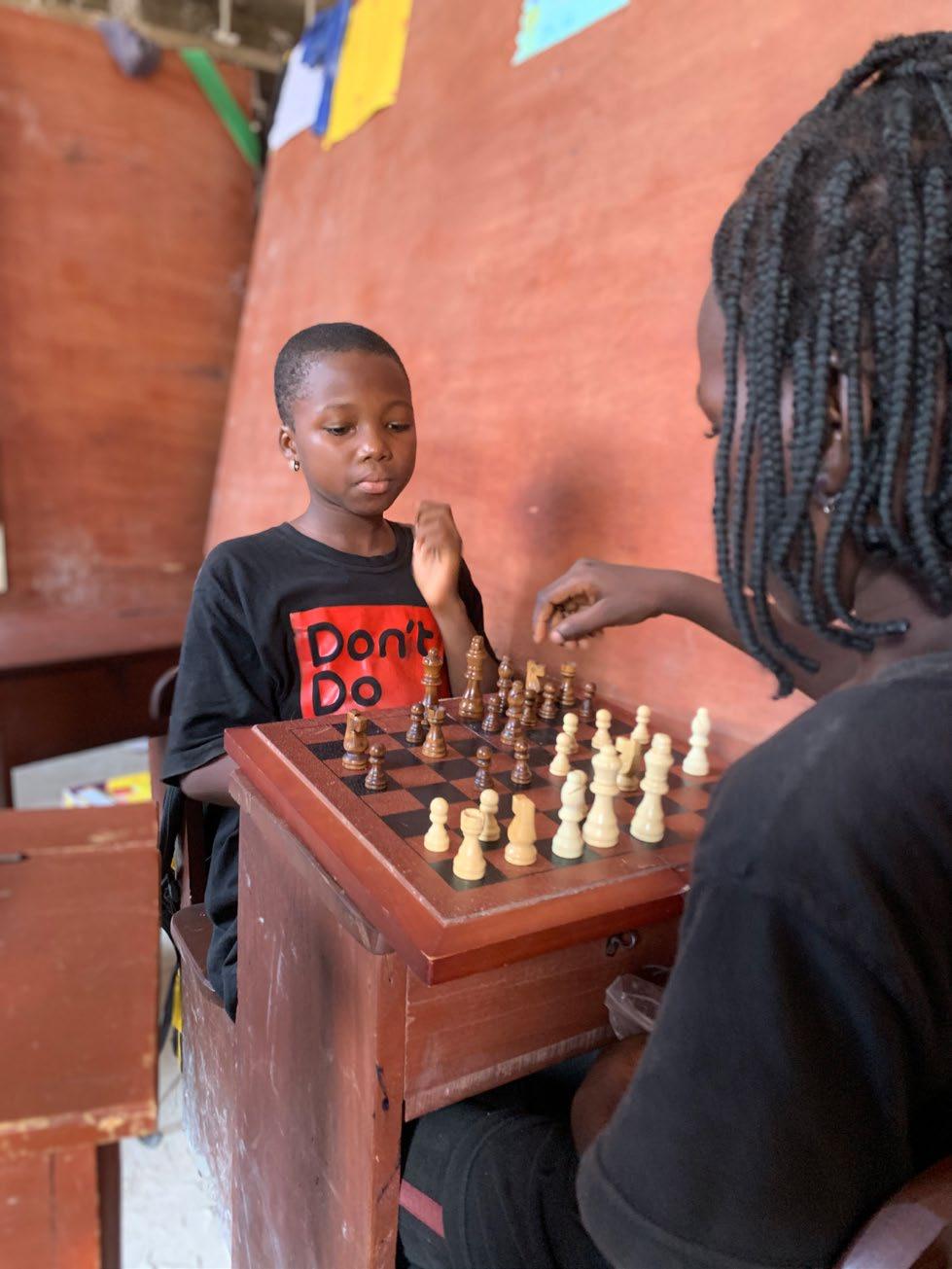





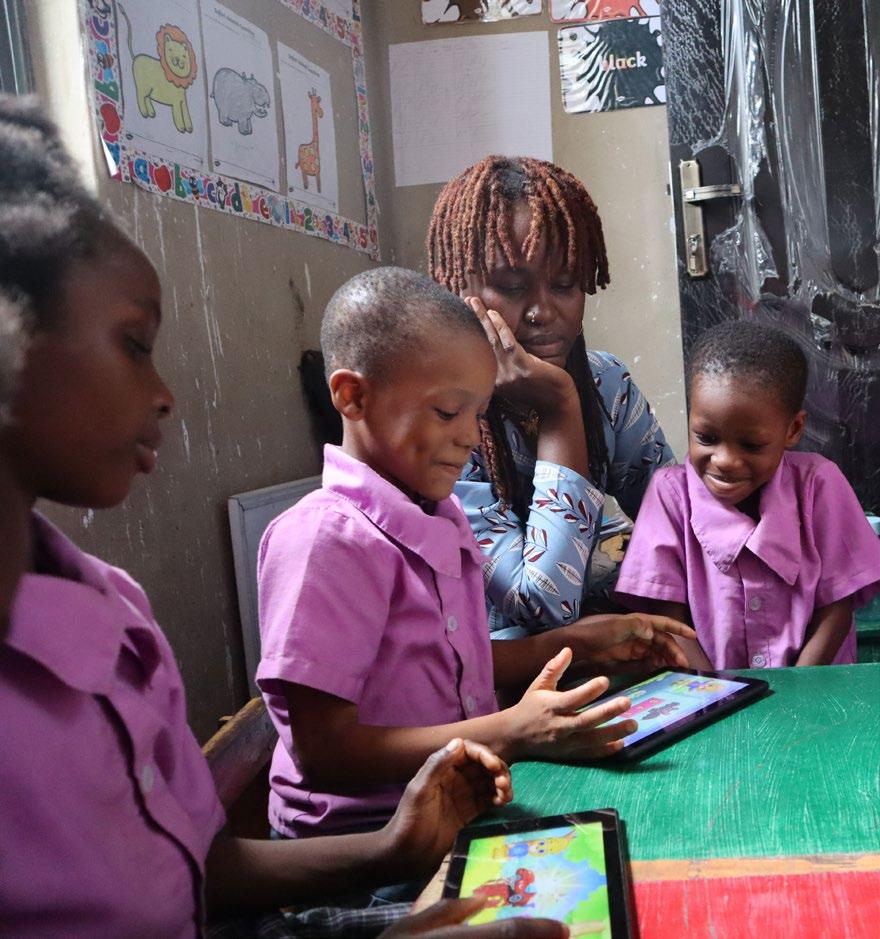

VOL 3 NO. 23 • JUNE 04, 2023 PAGE 10
LISTEN .READ .WATCH
BY KEHINDÉ FAGBULE
Tracklist
LISTEN
Thriller: An Iconic Masterpiece That Defines Pop Music
Artist: Michael Jackson
Genre: Pop
Year released: 1982
Released on November 30, 1982, Michael Jackson’s Thriller is an album that needs no introduction. It stands tall as a monumental masterpiece that revolutionised the world of pop music and shaped the industry’s future. With its groundbreaking production, infectious melodies, and Jackson’s unmatched vocal prowess, Thriller continues to captivate audiences even decades after its release.

1. Wanna Be Startin’ Somethin
2. Baby Be Mine
3. The Girl Is Mine (with Paul McCartney)
4. Thriller
5. Beat It
6. Billie Jean
7. Human Nature
8. P.Y.T. (Pretty Young Thing)
9. The Lady in My Life
Thriller is a timeless classic that transcends generations and continues to captivate listeners worldwide. From its infectious hooks and revolutionary production to Jackson’s unparalleled vocal prowess and showmanship, the album redefined the possibilities of pop music.
Notes on Grief: A Narrative of Mourning—of Haunting and Love
Author: Chimamanda Adichie
Genre: Non-fiction
Year Published: 2021
Notes on Grief is a poignant memoir penned by renowned Nigerian author Chimamanda Ngozi Adichie, published in 2021. The book is composed of 30 concise sections, each offering a glimpse into Adichie’s personal journey following the passing of her father, James Nwoye Adichie, in June 2020 amidst the

READ WATCH
Selma: One Dream Can Change The World
Director: Ava DuVernay
Genre: Historical drama
Year released: 2014
Cast: David Oyelowo, Carmen Ejogo, Tom Wilkinson, Giovanni Ribisi, Alessandro Nivola, Cuba Gooding Jr., Tim Roth, Oprah Winfrey
Selma, released in 2014, is a historical drama film directed by Ava DuVernay. The
early stages of the COVID-19 pandemic. Originally an essay published in The New Yorker, this expanded version delves deeper into the author’s reflections on loss. The New York Times aptly recognises that Adichie’s narrative not only captures the profound experience of losing a father but also illuminates how her father’s presence persists through the indelible impact he had on her development as a writer.
film chronicles the events surrounding the historic 1965 voting rights marches from Selma to Montgomery, Alabama, led by civil rights leader Dr Martin Luther King Jr. The story focuses on the struggle for African Americans’ right to vote and highlights the perseverance and determination of those involved in the movement.
The film begins with Dr Martin Luther King Jr. (played by David Oyelowo) receiving the Nobel Peace Prize for his nonviolent efforts in the civil rights movement. However, he is faced with the harsh reality that despite the passage of the Civil Rights Act of 1964, African Americans in the South are still denied the right to vote due to discriminatory practices and intimidation tactics.
Dr King and his colleagues, including Andrew Young (played by Andre Holland) and Diane Nash (played by Tessa Thompson), decide to focus their efforts on Selma, Alabama. They aim to bring attention to the issue by organising peaceful protests and demanding equal voting rights for African Americans. However, they encounter resistance from the local authorities, including Alabama Governor George Wallace (played by Tim Roth) and Sheriff Jim Clark (played by Stan Houston), who use violence and intimidation to suppress their efforts.
The film portrays the challenges faced by Dr King and his supporters as they confront systemic racism and engage in nonviolent
resistance. It depicts the pivotal events that occurred during the three marches from Selma to Montgomery, known as Bloody Sunday, Turnaround Tuesday, and the successful final march.
Selma showcases the personal struggles and sacrifices made by individuals involved in the civil rights movement, highlighting both the victories and setbacks they experienced. The film also explores the relationships between Dr King and his wife, Coretta Scott King (played by Carmen Ejogo), and the tensions within the movement itself.
Through powerful performances and an emotionally charged narrative, Selma pays tribute to the bravery and determination of those who fought for equality and social justice. The film emphasises the importance of peaceful protest, unity, and the right to vote in the ongoing struggle for civil rights. Selma serves as a poignant reminder of the significant historical events that shaped America’s journey towards racial equality and inspires reflection on the continued fight for justice today.

PAGE 11 THEWILL DOWNTOWN • www.thewilldowntown.com VOL 3 NO. 23 • JUNE 04, 2023 ENTERTAINMENT
How to Match Your Makeup TO YOUR OUTFIT LIKE A PRO
 BY DORCAS AKINTOYE
BY DORCAS AKINTOYE


Weall must have had the experience of staring into our makeup collection box with no idea of how we can match our makeup to our outfit for that event we are preparing for. Fear not; you can master the art of matching your makeup to your outfit like a pro by following a few simple tips and tricks. Matching your makeup to your outfit helps you create a cohesive and polished look that will make you feel confident and put together. It doesn’t matter whether you are going for a daring and bold look or something more subtle and understated; you can always match your makeup to your outfit, providing you pay attention to some key things that will help you in achieving that polished look. Mastering the art of matching your makeup to your outfit is a skill that every fashion-forward beauty lover should have in their arsenal, although it is not always easy to know which colours and techniques to use. This article will explore expert tips and tricks for matching your makeup to your outfit like a pro.
(1) START WITH COLOUR THEORY
Colour theory is your best friend when it comes to matching your makeup to your outfit. Study the colour wheel and look for complementary colours. For instance, if you are putting on a blue dress, try a warm-toned eyebrow in shades of orange or bronze, or if you are putting on a red top, go for a nude lip or a warm, peachy lip colour.

VOL 3 NO. 23 • JUNE 04, 2023 PAGE 12 THEWILL DOWNTOWN • www.thewilldowntown.com BEAUTY
(2)
The style and vibe of your outfit can serve as a guide when making your makeup choices. Try sticking to neutral shades and simple, elegant makeup for a timeless and classic look. If your outfit is bold and edgy, try a dramatic winged eyeliner or a bold lip colour to match.
(3) MATCH YOUR MAKEUP TO YOUR ACCESSORIES
The style and vibe of your outfit can serve as a guide when making your makeup choices. Try sticking to neutral shades and simple, elegant makeup for a timeless and classic look. If your outfit is bold and edgy, try a dramatic winged eyeliner or a bold lip colour to match.


(4)
You can avoid making your look overwhelming by focusing on one feature of your makeup to match your outfit. If you are putting on a bright, bold top, go for a neutral colour to balance it out. Try a more understated eye makeup look if you will be wearing a statement necklace.
(5) DON’T FORGET ABOUT SKIN TONE


In matching your makeup to your outfit, your skin tone plays an important role. If you have warm undertones, go for warm-toned makeup shades like peach, orange, and gold. Try cooler-toned shades like pink, blue, and silver if you have cool undertones. You can generally pull off both warm and cool-toned shades if you have neutral undertones.
(6) EXPERIMENT WITH TEXTURES
Matching your makeup to your outfit is not only about colour; it’s also about texture. Try a dewy, glowing makeup look if you are a soft, flowy outfit. Opt for a matte, polished makeup look if your outfit is more structured and tailored.
(7) DON’T BE AFRAID TO PLAY WITH CONTRASTS
Sometimes, the best way to match your makeup to your outfit is to create a bold contrast. If you are wearing a monochrome outfit, try a bold, bright lip colour to make a statement. If you are wearing a dark, edgy outfit, try a light, shimmery eye shadow to add some contrast and dimension.


PAGE 13 THEWILL DOWNTOWN • www.thewilldowntown.com VOL 3 NO. 23 • JUNE 04, 2023
CONSIDER YOUR OUTFIT’S STYLE AND VIBE
FOCUS ON ONE FEATURE
BEAUTY
Lactose Intolerance
EXPLORING DAIRY-FREE OPTIONS FOR BETTER DIGESTION
BY KEHINDÉ FAGBULE
Lactose intolerance is a common digestive disorder that affects millions of people worldwide. It occurs when the body lacks the enzyme lactase, which breaks down lactose, the sugar in milk and dairy products. Consuming dairy can lead to uncomfortable symptoms such as bloating, gas, diarrhoea, and stomach cramps for those with lactose intolerance. Thankfully, numerous milk alternatives are available that provide a suitable solution for individuals looking to avoid lactose while still enjoying the benefits of a nutritious and tasty beverage.
UNDERSTANDING LACTOSE INTOLERANCE
Lactose intolerance arises when the small intestine produces an insufficient amount of lactase enzyme, resulting in undigested lactose reaching the large intestine. Bacteria in the large intestine then ferment the lactose, leading to the production of gases and causing the typical symptoms associated with lactose intolerance.
MILK ALTERNATIVES: A VIABLE SOLUTION
Fortunately, the market for milk alternatives has expanded significantly in recent years, offering an array of options to meet various dietary needs and preferences. These alternatives, derived from plant sources, are lactose-free, making them suitable for individuals with lactose intolerance. Let’s explore some of the most popular milk alternatives:
Soy Milk: Made from soybeans, soy milk is a protein-rich alternative to dairy milk. It contains essential amino acids and is fortified with nutrients like calcium, vitamin D, and vitamin B12. Soy milk has a creamy texture and a slightly nutty flavour, making it a versatile option for drinking, cooking, and baking.


Coconut Milk: Extracted from the flesh of coconuts, coconut milk offers a rich and creamy alternative. It is high in healthy fats and provides a distinct tropical flavour to dishes and beverages. Coconut milk is a fantastic choice for curries, desserts, and tropical-inspired drinks.

Oat Milk: Oat milk, made from soaked and blended oats, has a mild and slightly sweet taste. It is a good source of fibre and contains betaglucans, which can help regulate cholesterol levels. Oat milk’s creamy consistency and neutral flavour make it suitable for a wide range of recipes.


Almond Milk: Almond milk, made from ground almonds and water, has gained significant popularity. It is low in calories, contains no saturated fats, and is a rich source of vitamin E. Almond milk has a slightly sweet taste and a light texture, making it a delightful addition to coffee, smoothies, and cereals.



Other Options: In addition to the above, there are several other milk alternatives available, including hemp milk, cashew milk, pea milk, and quinoa milk. Each has its own unique flavour profile and nutritional benefits.

Rice Milk: Rice milk, derived from milled rice and water, is the least allergenic of all milk alternatives. It has a thin and watery texture resembling skim milk and a naturally sweet taste. While it is not as nutritionally dense as other alternatives, rice milk is an excellent option for those with multiple food allergies.
CONSIDERATIONS AND NUTRITIONAL FACTORS
While milk alternatives can be suitable for individuals with lactose intolerance, it’s important to consider a few factors. When choosing a milk alternative, ensure it is fortified with calcium and vitamin D, as these nutrients are vital for maintaining bone health. Additionally, be mindful of added sugars and select unsweetened varieties whenever possible.
For individuals with lactose intolerance, milk alternatives provide a flavourful and nutritious solution that allows them to enjoy dairy-free options without compromising on milk to coconut and oat milk to choose from, plant-based milk is the healthier option.
VOL 3 NO. 23 • JUNE 04, 2023 PAGE 14 THEWILL DOWNTOWN • www.thewilldowntown.com BON APPÉTIT
1
4 5 6
THE ROLE OF CULTURE IN PEOPLE FROM MIXED ORIGINS More Especially the Africans
BY IKENNA CHURCHILL
we embrace it fully with satisfaction. People born from two different tribes focus on their father’s origin. For example, children whose parents are Yoruba and Igbo, given that the father’s side is Igbo, are of the Igbo culture and will have to learn and embrace it. But it doesn’t mean they can’t practice or learn their mother’s culture.


Gone are the days of self-restricting yourself from fully understanding your family values and traditions. Our culture saves us, and it’s wise, if you’re mixed, to carefully understand both by any means. This is the role you play in your life and your country, removing the thought of tribalism.
People from mixed origins do not have to freight, this is a good thing, and you get the chance to showcase your identity and play parts in saying: “Though we are diverse in our ways, we are united as we keep the sanity growing in the country.”
our culture, and those who are important and guide us. You don’t need to identify more than the other. You can identify as both if you’re of Ghanaian and Nigerian descent.
Overall, the role of culture in people of mixed origins in Africa is complex and varies depending on a range of factors, including personal identity, upbringing, external influences, and the diversity of African cultures.


We were taught about culture in school, and we recited this daily to the people around us:
Culture is the way of life of a people in a country or society. This was the first and only definition of culture in our minds and heads. Fast forward to now, we live our lives based on how we were raised, and this includes the culture of the society we were birthed gracefully into.
Nigeria, the giant of Africa, is diverse in many ethnic groups and origins. The top three are Yoruba, Hausa and Igbo. Each culture has its way of defining a person and how they are raised in society. Nigeria also breeds its own culture and values, which each citizen must adhere to. This culture Nigeria has is based on the constitution, and it is justified. Notwithstanding, ethnic groups also play a massive role in our lives.

We are born into different cultures of tribes, and we can see that by the way we; speak, eat, dress and greet. It defines us, and
Furthermore, if we link this to the whole of Africa, it will be the same thing we are talking about. But, there has been this constant drama online about how the culture of another African country is far better. A child whose dad is from Nigeria and mum is from Ghana should see an advantage rather than a comparison of either of the countries being better, or does it even mean that they must understudy one and shame the other? We are diverse but United Africans.
The culture of Africa is deeply rooted, and it varies due to the manifold, consisting of a mixture of countries with various tribes that each have their unique characteristic from the continent of Africa. Generally, culture can be defined as a collective mass of distinctive qualities belonging to a particular group of people. These qualities include laws, morals, beliefs, knowledge, art (music, dance, artefacts & writings), customs, and any other attributes belonging to a member of that society. They can be seen as the dominant traits that distinguish us from the rest of the world.
Even though African cultures are widely diverse, studies have shown that we are similar in how we uphold our morals and values, love and respect for

PAGE 15 THEWILL DOWNTOWN • www.thewilldowntown.com VOL 3 NO. 23 • JUNE 04, 2023
CULTURE
BY BOLUWATIFE ADESINA

MOVIE REVIEW:

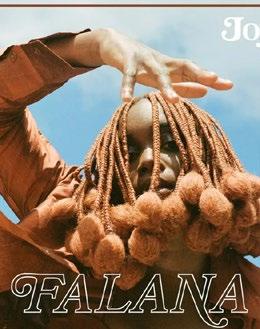


The Little Mermaid

WATCH OF THE WEEK
Twoyears ago, Disney announced that, for the first time in a decade, they were starting to train artists in traditional hand-drawn cel animation. Like any lover of animation, my heart soared, but the cynic in me feared that the plan was to make new cartoon features that could be cannibalised in decades to come for more redundant live-action features like The Little Mermaid.
The first film in the Disney Renaissance, the one that literally saved the animation division, 1989’s The Little Mermaid is an undeniable classic. It is also the latest hand-drawn classic to be fed into the machine that spews out Disney’s often-CG-amplified “live-action” remakes, beginning in 1994 with Rudyard Kipling’s The Jungle Book and floating between cresting highs (101 Dalmatians) and abyssal lows (Tim Burton’s eye-bleedingly awful Alice in Wonderland).
This remake just sort of treads water, buoyed up by the excellence of the original. You all know the story: Ariel (Bailey) yearns for life on land and to stand by Prince Eric (Hauer-King), but her mermaid fins get in the way. Enter the slithering sea witch, Ursula (McCarthy), who strikes a Faustian deal: legs for Ariel’s voice. So now it’s up to the now footloose princess and her trio of anthropomorphised pals – Diggs as Sebastian, the too-photorealistic crab, Tremblay as a positively nightmarish Flounder the fish, and Awkwafina as Scuttle the seagull, to kiss the boy before the enchantment becomes a curse.
Remakes aren’t necessarily bad. The Little Mermaid’s real sin is that it’s insufferably long. There’s an extra 52 minutes of bloat here, and it’s not just credits for the endless ranks of artists responsible for the sporadically gorgeous and occasionally dismally murky graphics. Nor can it all be attributed to the glacially slow direction by Rob Marshall, who

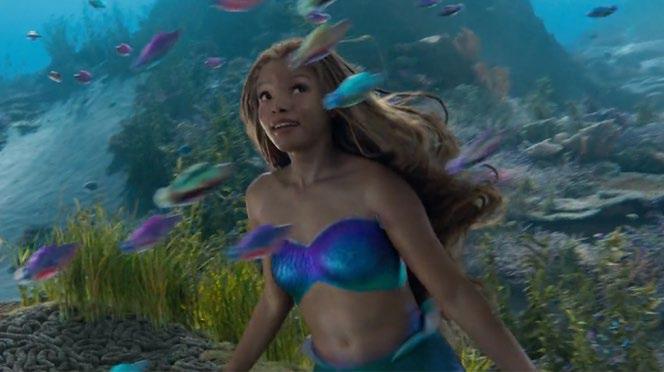
has lost much of his sly energy. Disney pulled in David Magee for the new script, which would seem to make sense after his success with Marshall on Mary Poppins Returns: But his every addition becomes a subtraction from John Musker and Ron Clements’ lean but touching original. He consistently underlines every point they left implicit while crowbarring in a clumsy and inessential subplot about tensions between the surface folk and those under the sea. Even the little tweaks make matters weaker: For example, the family gathering at the beginning is no longer a concert but a governmental meeting. So the importance of Ariel’s voice is reduced, even though that’s central to the story. It’s a minimal change, superficially, but subtextually infuriating. At least the singing is up to par, even if the new songs (again) add little.
Wild Uncharted Waters, an Ed Sheeran-esque power ballad, is part of that unnecessary push to give Eric more depth, but it’s still better than the awkwardly inserted The Scuttlebutt, a tone-breaking rap by Diggs and Awkwafina that should have Disney reconsider its mandatory Lin-Manuel Miranda policy. It’s also yet again proof that Marshall believes a good tune can make up for a lagging plot. It can’t. But Marshall is at least generally respectful of the original, and so enough of what made the original magical is still there to make this recognisable. But, yet again, that’s all of what’s best here, new interpretations and impersonations of what was done before.





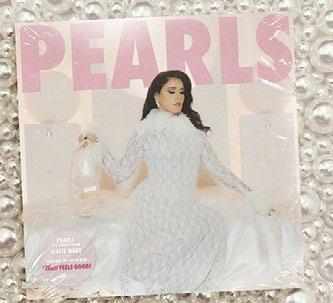
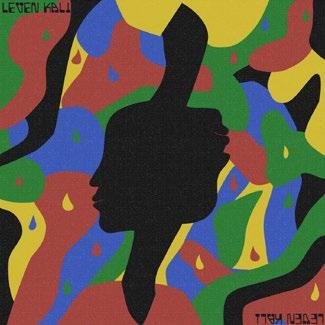
McCarthy’s tentacled menace is fine, but merely an approximation of what Pat Carroll did with the voice and Ruben Aquino created as character animation in the original. Bailey, equally, is a fine Ariel, but was always going to end up chasing Jodi Benson’s tail (as originally drawn by Glen Keane and Mark Henn).
At the end of the day, people won’t be lining up at a Disney park to ride a clamshell into a ride based on this live-action version. And that tells you everything you need to know. Next time, Disney, maybe just give this kind of money to the animators.
Leigh Whannell, actor, filmmaker and half of the team behind horror classic Saw, branches into technofuturistic action-horror with the brutally deft Upgrade, starring Logan Marshall-Green. Take some Robocop, fold in John Wick, sprinkle on a bit of 2001: A Space Odyssey and season generously with fake blood, a wink and a nudge, and you get Upgrade, which imagines a not-so-distant future in which wearable tech has become a body-horror nightmare.
Our hero, Grey, is your average mechanic, listening to soul music and tinkering with his muscle cars, while his wife, Asha (Melanie Vallejo), prefers the luxuries of sleek self-driving vehicles and smart homes, which give her that much more time to work at her tech company. One night, driving home from dropping off a vintage car to tech prodigy Eron (Harrison Gilbertson), the technological utopia proves fallible — and fatal. The couple’s self-driving car has an accident, Grey and Asha are left for dead. Grey survives, paralyzed, while Asha does not.
The mysterious Eron makes Grey an offer he can’t refuse. With a team of private doctors, Eron conducts a secret, unregulated surgery, implanting a tiny, roach-like widget, STEM, into Grey’s spine. STEM becomes the link between Grey’s brain and his malfunctioning body, allowing him to walk. And STEM, as Grey discovers, can talk. He’s the robotic voice in Grey’s head, the HAL inside of him, controlling his body. STEM becomes his partner in crimesolving, and his physical strength as they go after Asha’s killers, uncovering deeper and deeper conspiracies.
What makes Upgrade work are the tangible
UPGRADE
realities and fears it plays on. We all wear Fitbits. How long until criminals are getting functional guns implanted in their forearms? Alexa, Siri and their counterparts can be helpful, but how much presence should they have in our lives? Personal decisions? What if she turns on us?

Another crucial element is MarshallGreen’s performance. As pre-STEM Grey, he’s brooding and moody, an anti-tech Luddite. But desperate, grieving and newly jazzed up with his powers of STEM, he’s both in awe and bewildered. He begs STEM to show
mercy to his victims as he bludgeons them, his hands out of his control, but he also gloats, “you didn’t know I was a ninja”, to the thugs he corners in bar bathrooms.





His physical performance is what communicates the relationship between man and machine. He’s awkwardly upright and stiff; he doesn’t move in a way that’s “human,” because what’s moving him isn’t. Whannell plays with film speed and uses incredibly innovative camerawork to underline the unreality of Grey’s artificially enhanced movement. At times, the camera seems rigged to his body as we lurch along with him, and other times it pulls back to let us take in all of his whirling destruction.
Upgrade is a brutish, efficient and well-executed slice of cyberpunk action-horror with a silly streak. It tempers gratuitous and gory violence with a few laughs, drawing us in and then skewering our obsession with technology of the self. With presentday headlines about out-of-control selfdriving cars and smart speakers acting autonomously, Upgrade couldn’t feel more timely. All the gadgets and gear just might strip us of our own autonomy.
Rating: 5/10
 Scan this with your camera to access the playlist (Apple Music) Scan this with your camera to access the playlist (Spotify)
Scan this with your camera to access the playlist (Apple Music) Scan this with your camera to access the playlist (Spotify)
THEWILL DOWNTOWN • www.thewilldowntown.com VOL 3 NO. 23 • JUNE 04, 2023 PAGE 16
Jessie Ware - Pearls
Leven Kali - LET IT RAIN MIDNIGHT PHUNK; Jamilah Barry; AirBorn Gav - Shawty
Wesley Joseph - Ghostin’
BODUR; Bubba JankoWatch Me
Falana - Joy
Mysie - Over Time
Falana; Oxlade; Spax - JoySpax Remix
Amber Mark - Foreign Things
Varnish La Piscine - ADIOS, TORNADO’S EFFECT
Austin Millz; Aluna - Gold

















































 BY DORCAS AKINTOYE
BY DORCAS AKINTOYE











































 Scan this with your camera to access the playlist (Apple Music) Scan this with your camera to access the playlist (Spotify)
Scan this with your camera to access the playlist (Apple Music) Scan this with your camera to access the playlist (Spotify)